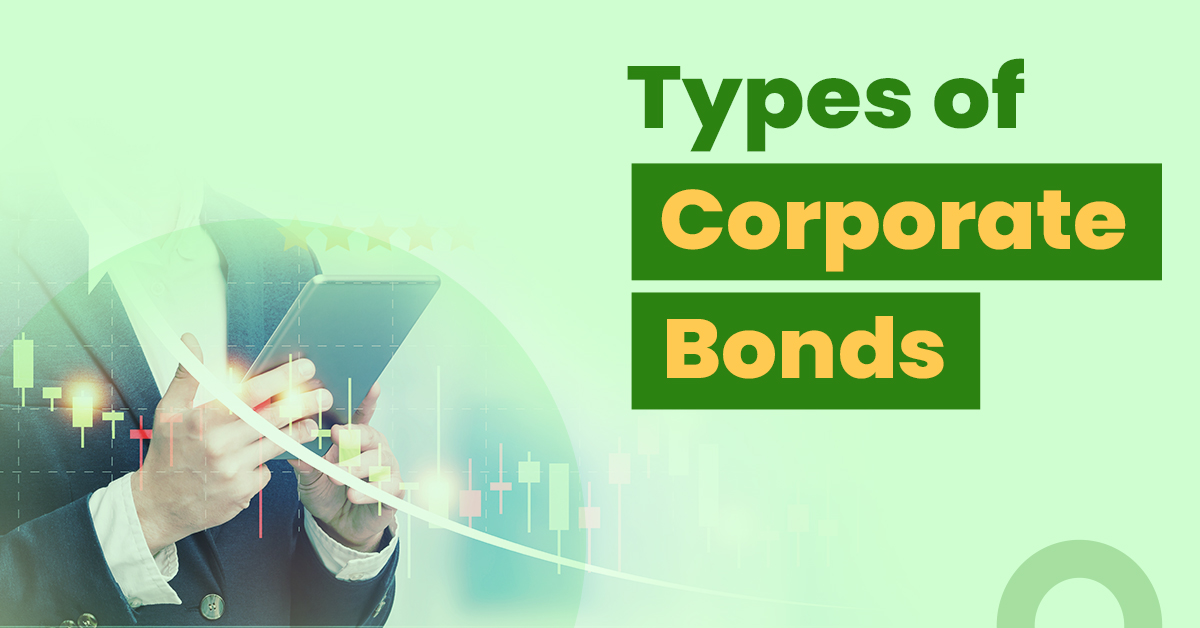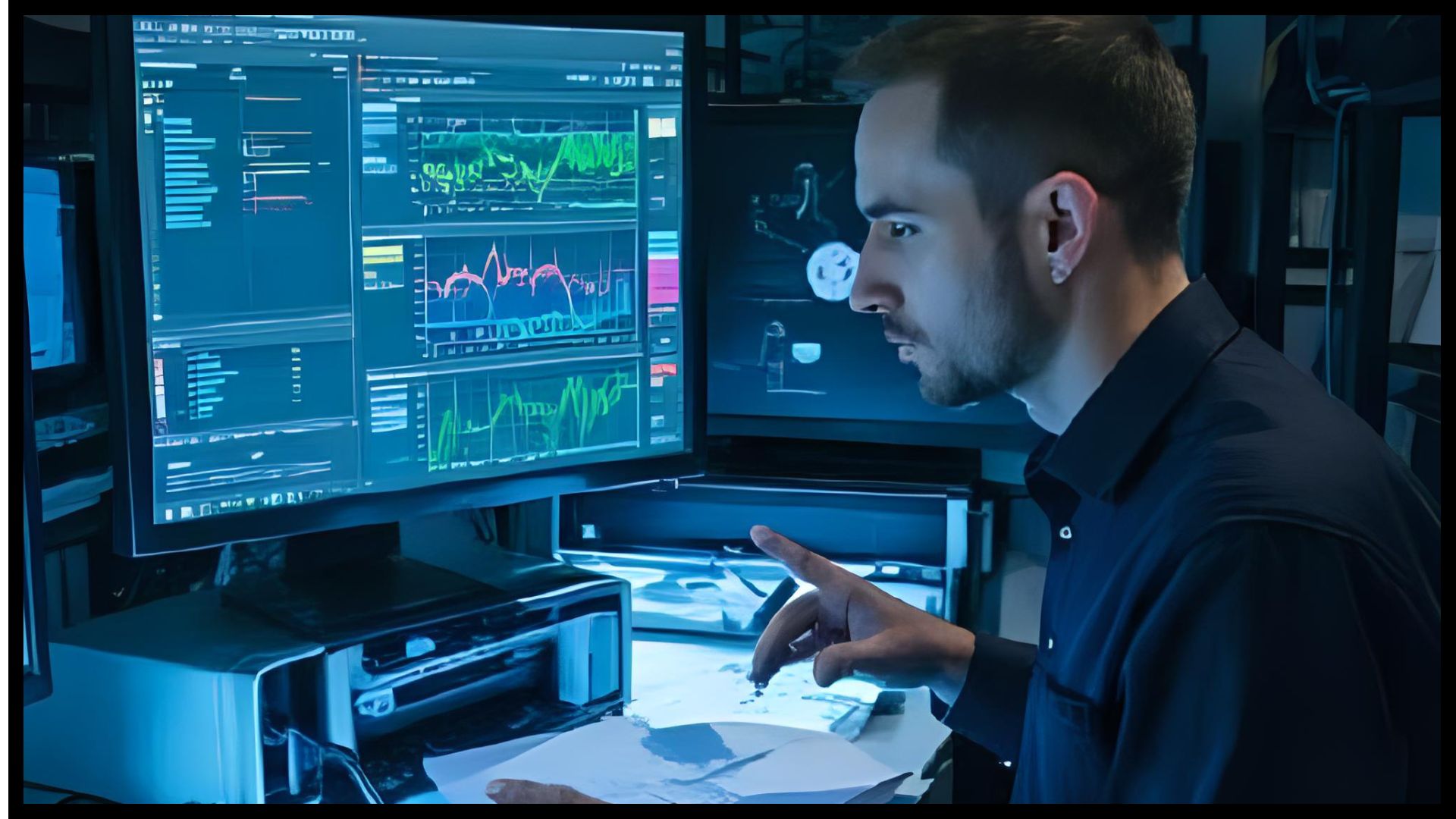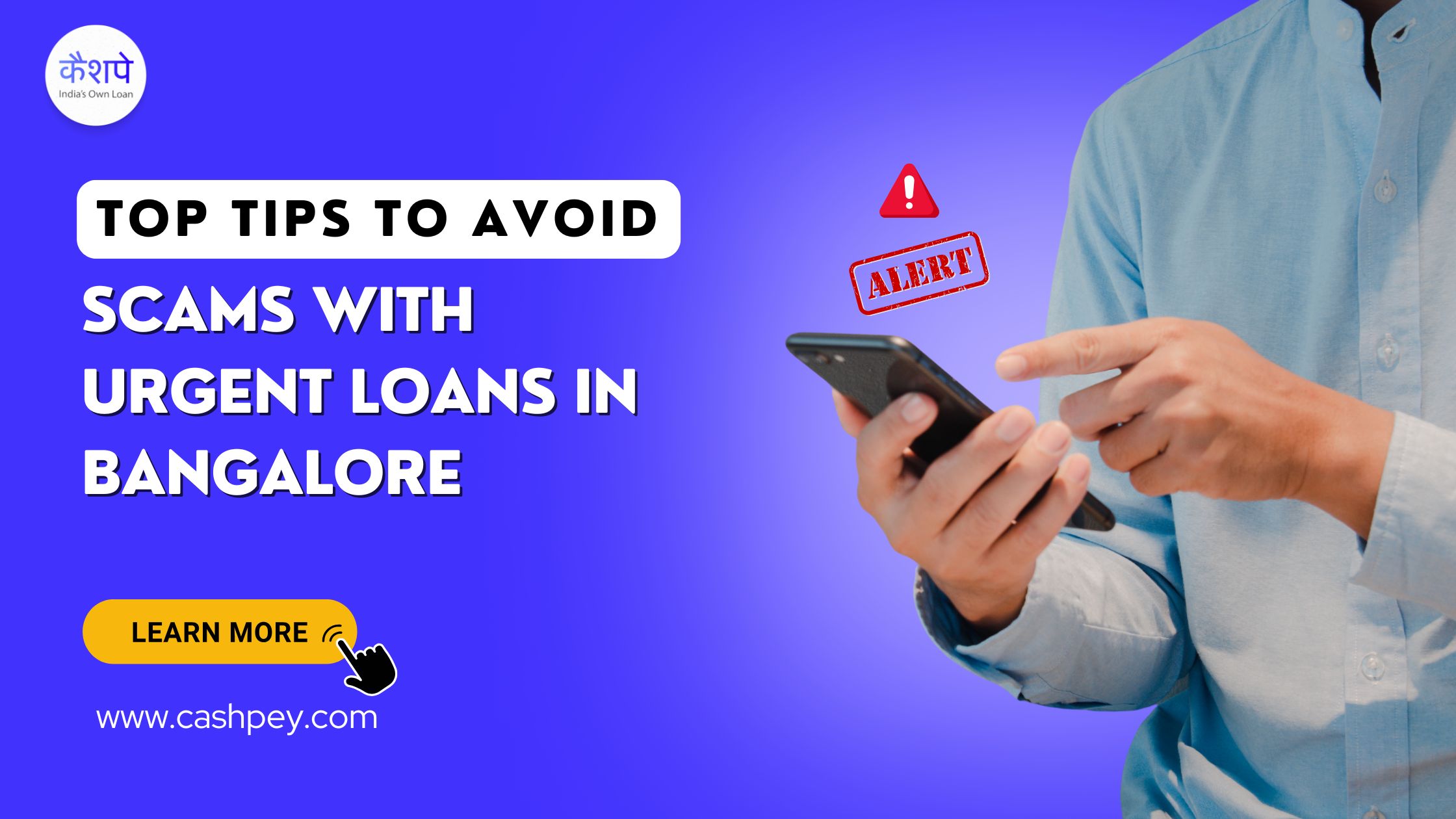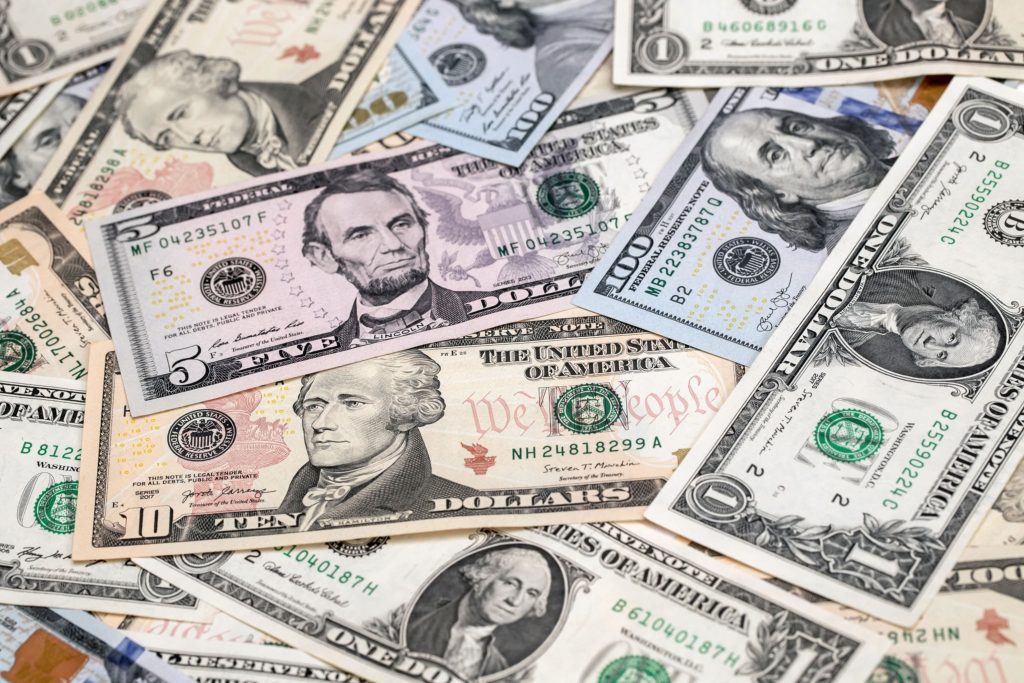Finance
Bitcoin Can Green Blockchain Technology Save the Day?

Finance
How Corporate Bond Ratings Impact Investor Confidence

Introduction
Corporate bonds have become a crucial instrument in the Indian debt market. They allow companies to raise money for expansion, working capital requirements, and to refinance existing debts. For investors who typically seek steady income, corporate bonds offer opportunities in India as part of a balanced portfolio. Corporate bond ratings remain crucial to investors, as they instill confidence in the investment choice.
What Are Corporate Bond Ratings?
Before we dive into how corporate bond ratings affect investor confidence, it’s important to understand what these ratings are and how they are assigned.
Corporate bond ratings are assessments made by credit rating agencies like Moody’s, Standard & Poor’s (S&P), and Fitch Ratings. These agencies evaluate a company’s financial health, its ability to repay its debts, and its overall creditworthiness. The ratings are expressed as letter grades, ranging from high-quality (low-risk) ratings to low-quality (high-risk) ratings.
Rating Scale Examples:
- AAA: Highest rating; low risk of default.
- AA, A: High-quality bonds with low risk, but slightly higher than AAA.
- BBB: Investment-grade bonds with moderate risk.
- BB and below: Junk bonds or high-yield bonds; higher risk of default.
The rating a company receives can change over time, based on factors such as its financial performance, market conditions, and broader economic trends.
Understanding Corporate Bond Ratings
Corporate bond ratings are ratings given by various rating agencies on the creditworthiness of a company that issues bonds. The ratings basically indicate how well the issuer may be able to meet its obligations of paying interest and principal on time. Better-rated debt denotes low risk, while poorer ratings imply a higher risk. Ratings provide investors with a standardized measure to allow for comparison of various corporate bonds in India.
Corporate bond ratings are assessments of an issuer’s ability to repay debt, with ratings like AAA indicating very low risk and D indicating default. These ratings are assigned by credit rating agencies using a letter-based scale, where higher ratings like AA and A signify a strong capacity to meet financial obligations, while lower ratings like BB or B signal a higher risk of default and are often called “junk” or speculative-grade bonds.
How Corporate Bond Ratings Impact Investor Confidence
1. Risk Assessment and Decision-Making
The primary function of corporate bond ratings is to provide investors with a clear and objective assessment of the risk associated with a bond. Investors use these ratings to make informed decisions about where to allocate their capital. Generally, higher-rated bonds offer more security but may provide lower returns, while lower-rated bonds (BB and below) offer higher returns at the cost of greater risk.
When ratings are high, investors feel confident in the company’s ability to make timely interest payments and repay the principal. This confidence translates into lower yields on high-rated bonds, as the risk is perceived to be minimal. Conversely, if a company’s credit rating is downgraded, it signals potential financial instability, which can cause investor confidence to dip. In such cases, investors may demand higher yields to compensate for the added risk, or they may choose to avoid the bond altogether.
2. Market Behavior and Bond Prices
Corporate bond ratings also directly affect the market prices of bonds. A higher rating generally results in higher demand for the bond, which drives up the price. A bond with a lower rating will typically have a lower price to reflect the increased risk of default. This price fluctuation is important for investors who may want to buy or sell bonds on the secondary market.
For example, if a company’s bond rating is upgraded from “BBB” to “A,” the bond price is likely to rise, as more investors will be interested in purchasing it due to the improved creditworthiness. On the other hand, a downgrade from “A” to “BBB” might lead to a decrease in bond prices, as investors become wary of the increased default risk.
3. Impact on Investor Portfolios
For many institutional investors, such as pension funds, mutual funds, and insurance companies, bond ratings are an essential tool for managing risk within their portfolios. These investors often have specific rating criteria when selecting bonds. For example, they may focus on investment-grade bonds (ratings of BBB or above) because these bonds are perceived as less risky. If a company’s bond rating is downgraded to junk status (below BBB), it could lead to forced selling of the bond by institutional investors who are restricted to holding investment-grade securities.
The stability and performance of an investor’s portfolio can be heavily impacted by fluctuations in bond ratings. A significant downgrade of a major bond could lead to higher volatility in the portfolio, affecting returns and potentially leading to financial losses.
Impact on Interest Rates and Yield
The direct impact of corporate bond rating happens when it is related to the interest rates or yields that are the responsibility of the issuer. Companies with high ratings can afford to borrow at low interest rates, since investors see low risk attached to their debt. On the other hand, a lower-rated bond has to provide a higher yield in order to compensate for the greater perceived risk. Generally, investors compare yields on a valid basis among different bonds with similar ratings to evaluate such opportunities.
Market Liquidity and Trading Behavior
Ratings also factor into liquidity in bond trading in India. Well-rated bonds are marketed better and attract institutional and retail investors alike. Selling and buying these bonds becomes quite efficient, thus allowing investors to produce returns quickly on a short- and medium-term basis.
Bonds with gilt-edged ratings would have the least liquidity, given that anyone attempting to transact them would hardly find anyone ready to buy them with any significant discount in price. Hence, low-rated bonds would have an extremely high risk and a higher degree of uncertainty associated with them in terms of price realization, since low-rated bonds, if perceived as safe, will allow for active trading and help stabilize the market, which will again raise investor confidence.
Portfolio Diversification Considerations
To achieve portfolio diversification, an investor often holds bonds in India in the portfolio. The decision to include a variety of corporate bonds with different ratings allows for a good mechanism to balance risk with steady income returns. The higher-rated bonds might give stability to the portfolio, while moderately rated bonds may bring in the opportunity of higher yields.
Psychological Effect of Ratings
Corporate bond ratings generate a psychological effect on investor behavior. A good rating can instill trust in the issuer and establish the persona of reliability. Investors would often interpret a positive rating as a signal for good financial management and prudent corporate governance.
On the other hand, downgrades or watchlist warnings put fear in investors. Irrespective of whether the company’s fundamentals were stable, negative rating actions could impact sentiment and lead to bouts of temporary volatility. Having an understanding of this behavioral aspect will allow investors an opportunity to look at ratings in an analytical rather than emotional manner.
The Regulatory and Compliance Role
The corporate bond ratings in India are enabled by the regulatory authorities, weighing heavily on the promotion of transparency and investor protection. Rating information must be disclosed in the offer documents of companies issuing bonds. The regulatory authorities maintain an oversight ensuring regular updates of ratings and standardized methodologies to be used by rating agencies.
This compliance assures greater trust among investors to invest in bonds in India. Ratings lend an authoritative voice to providing evidence that remains consistent and stable, which aids in the assessment of risk by the investors while maintaining confidence in the corporate debt market.
Challenges and Limitations of Ratings
While corporate bond ratings are important instruments in the market, they do have their limitations. Ratings provide the historical and current state of financial affairs, but often fail to withstand sudden shocks in the market or unanticipated events. Investors need to combine ratings with independent inquiry and market analysis.
Conclusion
The impact of a corporate bond rating on investor confidence in bonds in India is thus huge. They provide a reasonable degree of standardization in measuring credit risk, influencing yields, liquidity, and portfolio diversification. Ratings, too, have a psychological aspect that impacts the trader-rated market sentiment.
While ratings remain eminent tools for credibility, investors should use them in conjunction with independent analysis, along with conscious knowledge of their own risk tolerance. This enables integrating bonds in India, whose ratings have guided toward systematic investment and into the balanced financial plan. Understanding the role of ratings will enable the investor to characterize the corporate bond market with lucidity and confidence. They become capable of considering options based on risk, yields, and portfolio allocation.
Finance
Financial Statement Analysis Software: Unlocking Power of Data

Introduction
Financial statement analysis is the backbone of effective financial management. It involves examining and interpreting financial data such as income, expenses, assets, and liabilities to assess a company’s performance and stability.
In the past, this process relied heavily on manual calculations, spreadsheets, and repetitive checks, which often led to wasted hours and human errors.
Today, automation has changed everything.
What Is Financial Statement Analysis Software?
Financial statement analysis software like EZ Bank Summary automates the entire process of extracting, categorizing, and summarizing financial data. It transforms complex bank statements into clear, actionable insights that help you make smarter, data-driven decisions.
By automating tasks such as transaction categorization and financial summary creation, users can spend less time on manual work and more time on strategic financial planning.
Financial statement analysis software is a tool designed to help businesses evaluate their financial performance through the automated analysis of key financial documents. By inputting data from balance sheets, income statements, and cash flow statements, this software provides businesses with a comprehensive overview of their financial situation.
The software typically offers a range of features, including:
- Ratio analysis: Automated calculation of key financial ratios (e.g., liquidity ratios, profitability ratios, and efficiency ratios) that provide insights into a company’s financial performance.
- Trend analysis: Tracking financial trends over time, allowing businesses to identify patterns and anticipate future performance.
- Comparative analysis: Comparing the company’s financial performance against industry benchmarks or competitors.
- Forecasting and projections: Predicting future financial outcomes based on historical data, helping businesses make more informed strategic decisions.
- Reporting: Generating comprehensive reports for internal stakeholders or external parties, such as investors and creditors.
These tools make it easier for companies to make sense of their financial data and take proactive steps to improve their business operations.
Why Is Financial Statement Analysis Important?
Understanding the significance of financial statement analysis is essential for any business, whether small or large. Here’s why financial analysis plays such a vital role in decision-making:
1. Assessing Business Health
Financial statement analysis allows businesses to assess their financial health by reviewing key metrics such as profitability, liquidity, and debt levels. It helps identify areas of strength and weakness, making it easier to pinpoint areas that require attention.
2. Identifying Financial Trends
By analyzing financial statements over a period, businesses can identify trends and patterns in their financial performance. For example, a consistent rise in revenue or declining expenses could point to a successful business strategy. Conversely, a drop in profitability or rising debts may highlight potential issues that need addressing.
3. Supporting Strategic Decision-Making
Business decisions, especially those that involve investments, acquisitions, or expansions, need to be backed by solid financial data. Financial statement analysis software can provide real-time data and predictive insights, supporting managers and executives in making informed decisions.
4. Improving Financial Forecasting
Effective financial forecasting relies heavily on historical data. With financial statement analysis software, businesses can generate more accurate forecasts based on past trends and projected financial outcomes. This is invaluable for budgeting, resource allocation, and risk management.
5. Enhancing Investor Confidence
Investors are always looking for businesses that are financially stable and capable of generating returns. Regularly analyzing financial statements and sharing the results with stakeholders builds trust and ensures transparency. Financial statement analysis software can help automate this process, ensuring accuracy and timeliness in reporting.
How Financial Statement Analysis Software Works
The strength of automation lies in speed and precision. Advanced tools use intelligent algorithms to analyze, classify, and interpret your financial data instantly from uploaded statements or reports.
Here’s how it typically works:
- Data Upload: Upload your financial reports or bank statements in any supported format.
- Automatic Data Extraction: The software scans transactions line by line, identifying dates, descriptions, and amounts accurately.
- Smart Categorization: Using keyword detection and rule-based logic, transactions are automatically grouped as income, expenses, vendor payments, and more.
- Summary Generation: In seconds, you receive a neat, visual summary—complete with charts and tables that reveal spending patterns and income trends.
This automated workflow eliminates manual effort and ensures every transaction is correctly recorded and categorized.
Integration with Other Financial Tools
One of the major advantages of tools like EZ Bank Summary is their ability to integrate seamlessly with other financial software solutions.
1. Bank Statement Analysis Tool
EZ Bank Summary doubles as a powerful bank statement analyzer, helping users extract transaction details, detect discrepancies, and identify trends.
It’s perfect for accountants, tax consultants, and business owners handling multiple accounts.
2. Income Tax Filing Software Integration
Tax filing becomes effortless. The software produces reports that are compatible with income tax filing systems, allowing you to:
- Categorize transactions
- Identify deductible expenses
- Export accurate data for quick tax submissions
Learn more in our blog: Streamline Your TAX Filing with Bank Statement Analysis
3. GST Filing for Tax Consultants
For accounting professionals, EZ Bank Summary integrates with GST filing software, automating GST-related transaction classification, credit tracking, and tax reporting.
This integration minimizes compliance worries and improves efficiency.
Key Advantages of Financial Statement Analysis Software
- Precision & Uniformity: Automated categorization reduces errors and misclassifications.
- Time Efficiency: Generate comprehensive financial reports in minutes.
- Error Reduction: Eliminate mistakes from manual data entry and spreadsheets.
- Data Visualization: Gain clear insights through charts, graphs, and summarized data.
- Simplified Compliance: Seamless integration ensures your records are tax- and GST-ready.
Who Can Benefit from Automated Financial Analysis?
- Small Business Owners: Track income, expenses, and profitability easily.
- Freelancers: Monitor client payments and project-related costs.
- Accountants & Tax Consultants: Automate data extraction and reporting.
- Corporate Finance Teams: Maintain transparency and consistency in reporting.
Take Control of Your Financial Analysis Today
In today’s fast-paced financial world, automation is a must, not a luxury. Manual data entry, managing endless spreadsheets, and time-consuming reconciliations are things of the past. With tools like EZ Bank Summary, you can simplify your reporting, improve data accuracy, and get real-time insights into your financial performance.
By adding automation to your daily work, you save time and reduce the stress of manual accounting. Whether you’re a small business owner managing cash flow, a freelancer with multiple clients, or a financial professional looking for more efficiency, the benefits are clear: faster decisions, better insights, and more control over your finances.
Automation also helps with strategic growth. With accurate, up-to-date financial data, you can plan investments, forecast results, and make smart decisions for long-term success. Instead of wasting time fixing spreadsheets, you can focus on growing your business and reaching your financial goals.
Start using smarter, more efficient financial management today!
See how EZ Bank Summary can improve your financial process, reduce mistakes, and help you make confident, informed decisions every time.
Frequently Asked Questions
Q1. What is financial statement analysis software?
It’s an automated system that reads, categorizes, and summarizes financial data from statements, simplifying financial performance analysis.
Q2. How does EZ Bank Summary differ from a regular bank statement analyzer?
Unlike basic tools, EZ Bank Summary goes beyond transaction reading it offers categorization, reporting, and tax integration for complete financial insights.
Q3. Can I use it with my income tax filing application?
Yes, it integrates smoothly with popular tax filing software, enabling quick and accurate tax filing.
Q4. Is this useful for GST consultants?
Absolutely! It connects with GST filing software, allowing tax professionals to manage multiple clients efficiently.
Q5. How does automation reduce financial errors?
By removing manual input and calculations, automation ensures consistent, accurate, and up-to-date financial data.
More BlogShare: https://contrank.com/
Finance
Top Tips to Avoid Scams with Urgent Loans in Bangalore

Introduction
In the modern hectic environment, one may encounter a financial crisis any minute. There are a large number of people in Bangalore who use the services of urgent cash loan in Bangalore to cover uncertain costs. Nevertheless, online lending websites have also increased, which has caused a surge in fraudulent activities. Bangalore has been the center of scammers that promise to provide personal loans to those interested in borrowing money with little to no documentation and fast approval. The following is a step-by-step guide on how to defend yourself and make wise decisions on the way to apply loans.
What Are the Common Scams in Urgent Loan Services?
The initial step on the way to protection of your money is to understand in what types of scams you can be involved. Some of the common scams are fake websites which promise to provide long term loans without credit checks, phishing calls seeking sensitive information and advance-fee scams where the borrower is required to pay an upfront processing fee. Fraudsters tend to tempt lenders with cheap rates or immediate applications.
When one needs a personal loan in Bangalore, he has to ensure that the lending organization is legitimate. Official lenders typically possess registered web sites, verified contacts and clear conditions as regards loans. Do not disclose any bank account details, OTPs, or other such personal identification documents to these unverified sources.
How Can Video KYC Build Trust in Digital Loan Processes?
Video KYC Instills Confidence in Online Loan applications through the application of a safe verification system. Video KYC welcomes people with the possibility of checking their identity using a video call because, unlike traditional KYC, video KYC requires no physical documentation. This will minimize the chances of identity theft as well as make sure that the lender is legal.
When you are seeking an urgent cash loan in Bangalore, select lenders that offer video KYC as a digital onboarding service. This helps in keeping your personal information safe and you are safe against fraudulent schemes. The use of video KYC to ensure that digital loans are safe and convenient has been embraced by reputable lenders such as Cashpey.
What Should You Check Before Applying for a Personal Loan in Bangalore?
Before applying for any personal loan in Bangalore, it’s crucial to verify several key factors:
- Lender Registration: Ensure the lender is registered with RBI or recognized financial authorities.
- Interest Rates and Charges: Check for hidden charges or unusually low-interest rates, which could be a red flag.
- Loan Terms: Carefully read the loan agreement to understand repayment schedules, late fees, and prepayment policies.
- Customer Reviews: Look for genuine reviews and feedback from previous borrowers to gauge the lender’s credibility.
How Can You Avoid Scams While Accessing Long Term Loans?
Long term loans are particularly attractive to individuals who need higher funding amounts or longer repayment periods. However, scammers often exploit these situations by offering unrealistic terms. To avoid scams:
- Only apply through official channels or verified loan aggregators.
- Avoid lenders who pressure you to make immediate payments before loan approval.
- Keep records of all communication and loan agreements.
- Use secure platforms with encryption to protect sensitive financial information.
Choosing reputable institutions like Cashpey for long term loans ensures compliance with regulations and offers additional layers of security through verified digital processes.
Why Is Caution Important for Urgent Cash Loans in Bangalore?
Video KYC Instills Confidence in Online Loan applications through the application of a safe verification system. Video KYC welcomes people with the possibility of checking their identity using a video call because, unlike traditional KYC, video KYC requires no physical documentation. This will minimize the chances of identity theft as well as make sure that the lender is legal.
When you are seeking an urgent cash loan in Bangalore, select lenders that offer video KYC as a digital onboarding service. This helps in keeping your personal information safe and you are safe against fraudulent schemes. The use of video KYC to ensure that digital loans are safe and convenient has been embraced by reputable lenders such as Cashpey.
Additional Tips to Stay Safe
- Verify Contact Details: Always call the official numbers listed on the lender’s website.
- Check Legal Compliance: Ensure the lender follows RBI guidelines and has clear loan agreements.
- Avoid Upfront Fees: Legitimate lenders deduct fees from the sanctioned amount, not before approval.
- Educate Yourself: Stay updated on common scams and share knowledge with friends and family to prevent fraud.
Conclusion
There is always a hassle with the loan market in Bangalore particularly when one is in need of a loan at an urgent basis. Borrowers can safeguard themselves against fraud by learning about popular scams, focusing on video KYC verification, and doing adequate research about personal loans in Bangalore. Bangalore has many places to take quick cash loans, and if you are intending to take long term loans, do not forget to use reputed and verified sites.
Such brands as Cashpey focus on safe online loan systems, which provide quick, transparent, and safe financial products to the borrowers. The right trick is to be on the alert and not to fall prey to scams in order to address your desperate financial condition.
-
Business2 years ago
Cybersecurity Consulting Company SequelNet Provides Critical IT Support Services to Medical Billing Firm, Medical Optimum
-
Business2 years ago
Team Communication Software Transforms Operations at Finance Innovate
-
Business2 years ago
Project Management Tool Transforms Long Island Business
-
Business2 years ago
How Alleviate Poverty Utilized IPPBX’s All-in-One Solution to Transform Lives in New York City
-
health2 years ago
Breast Cancer: The Imperative Role of Mammograms in Screening and Early Detection
-
Sports2 years ago
Unstoppable Collaboration: D.C.’s Citi Open and Silicon Valley Classic Unite to Propel Women’s Tennis to New Heights
-
Art /Entertainment3 years ago
Embracing Renewal: Sizdabedar Celebrations Unite Iranians in New York’s Eisenhower Park
-
Finance3 years ago
The Benefits of Starting a Side Hustle for Financial Freedom
































